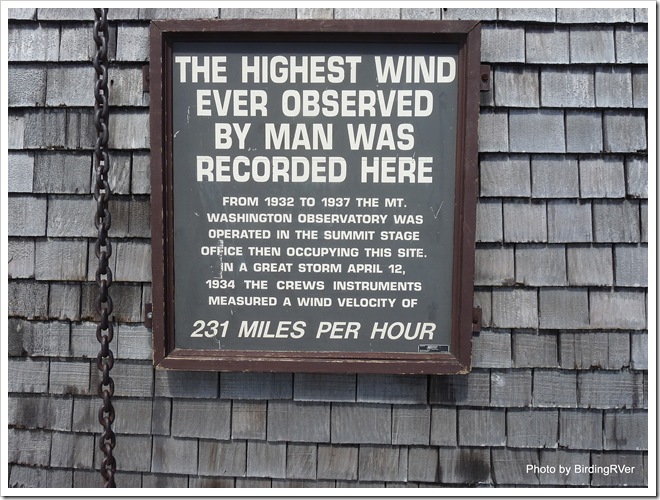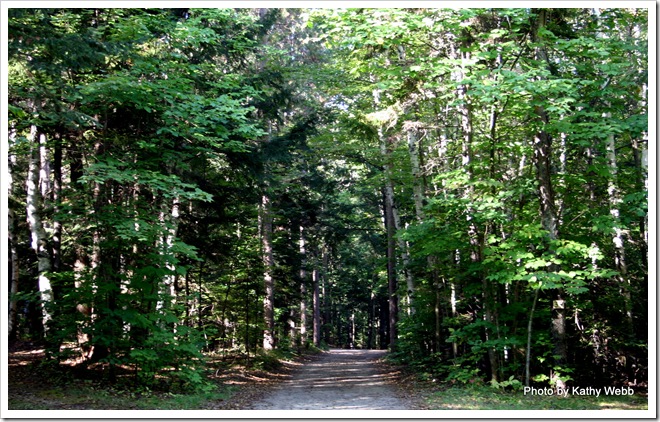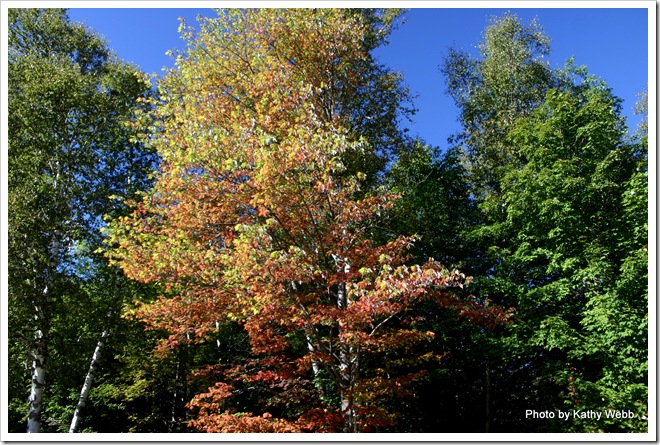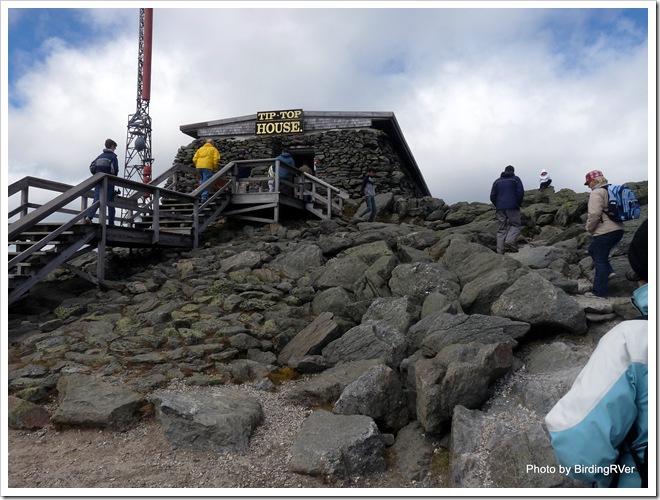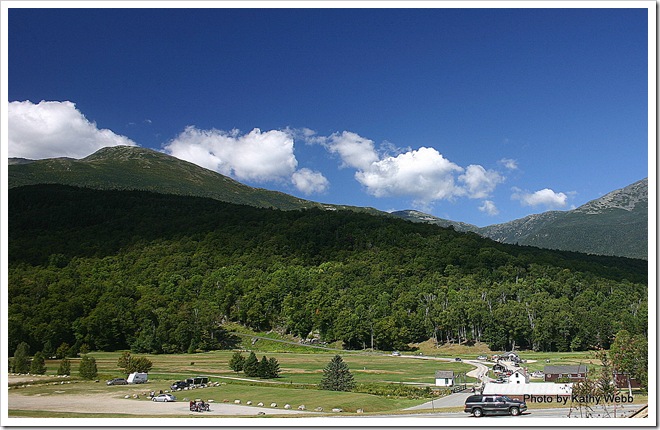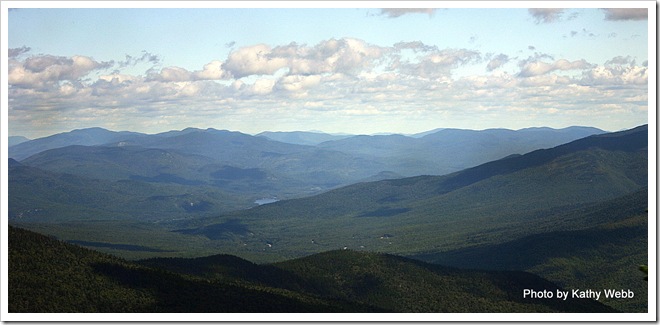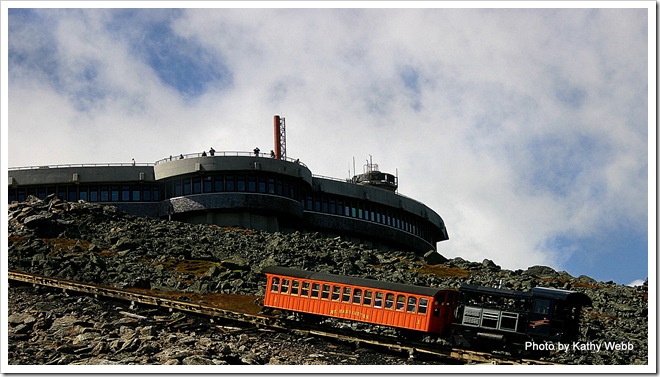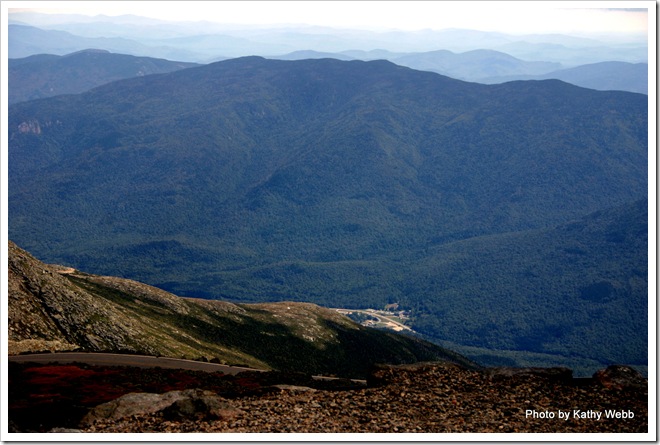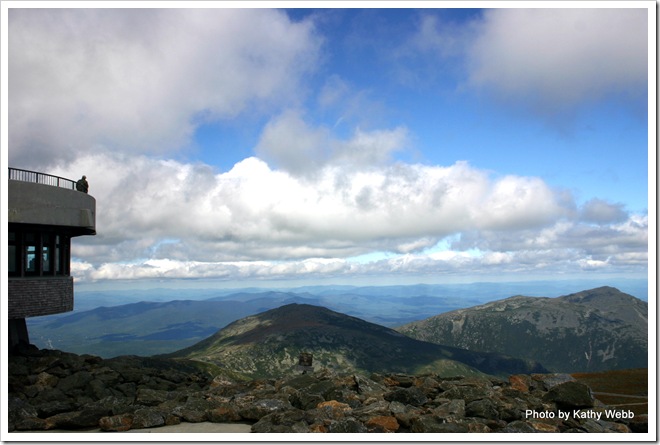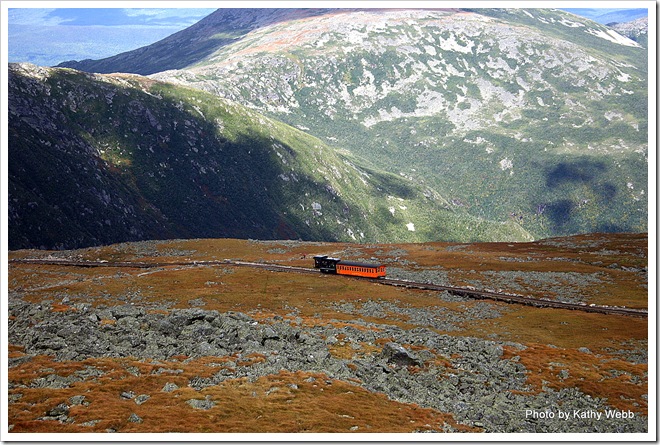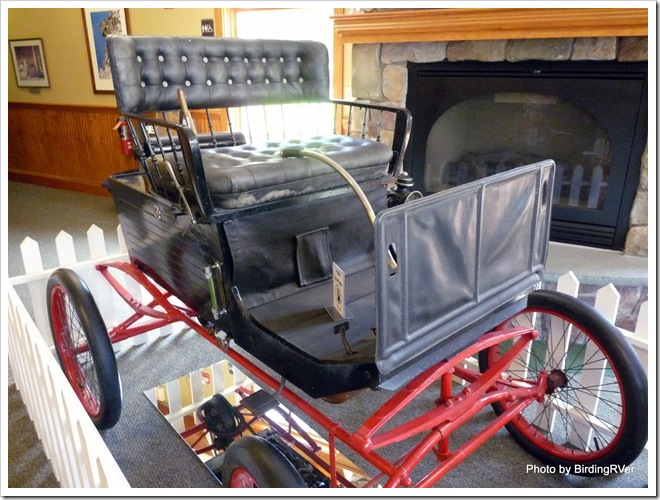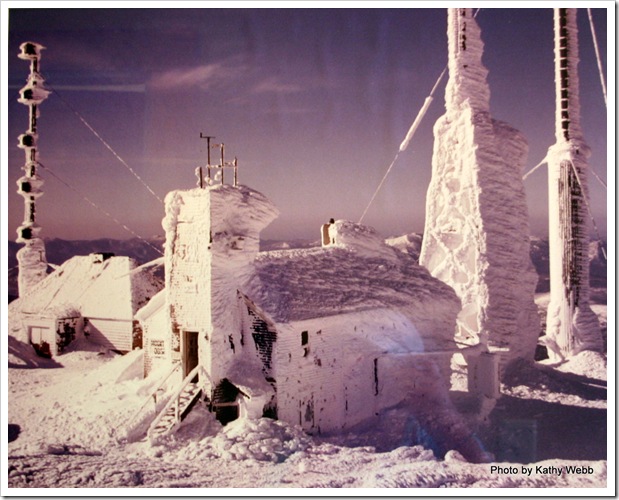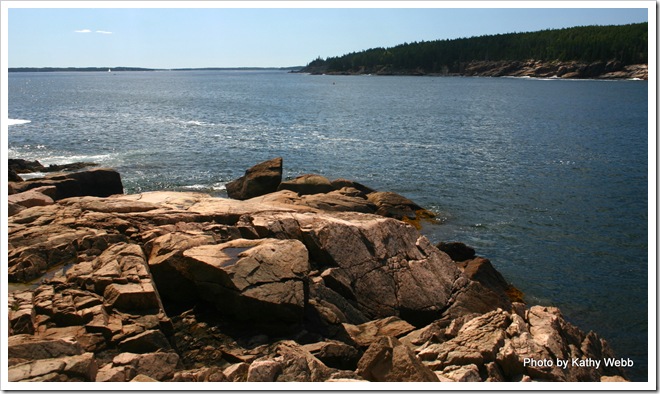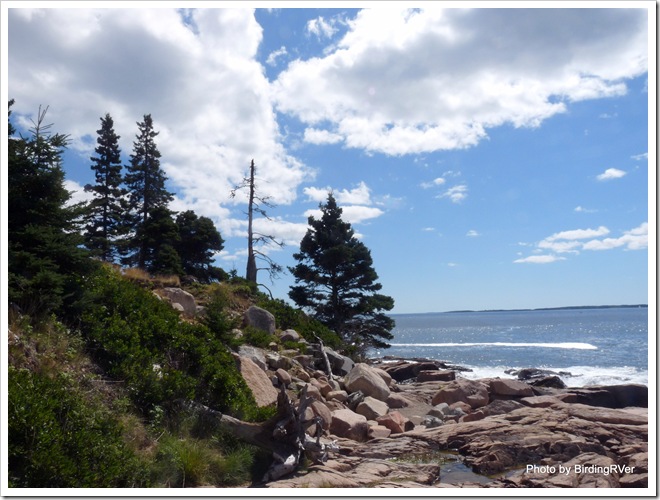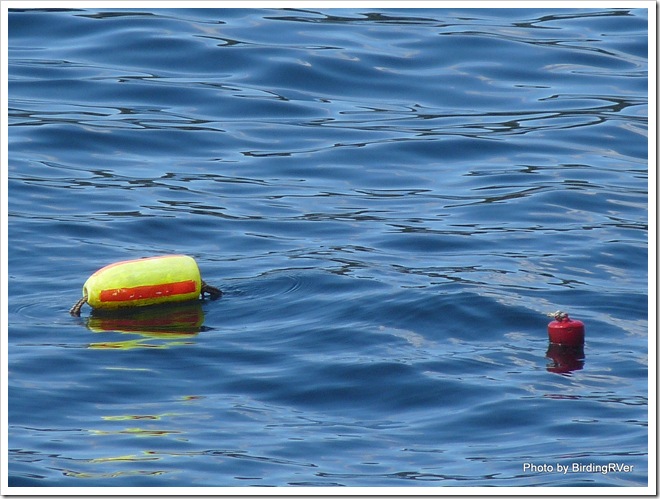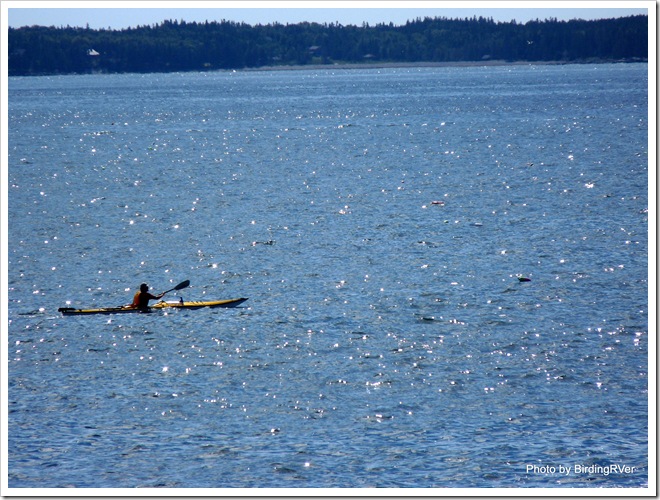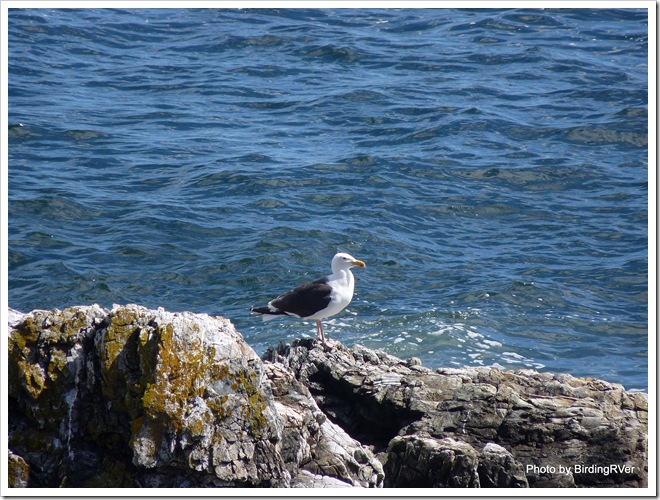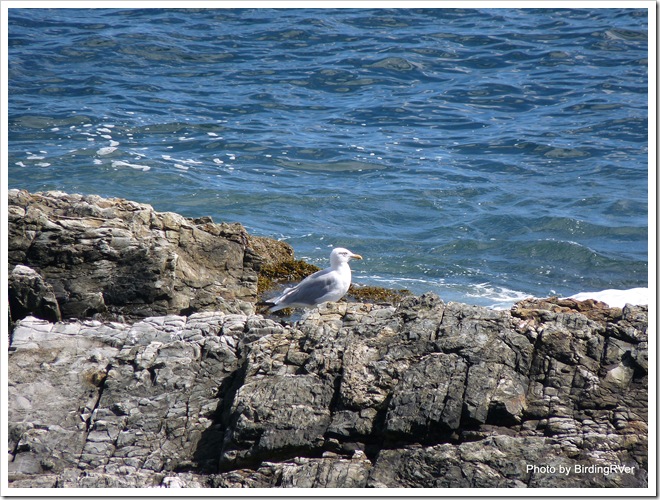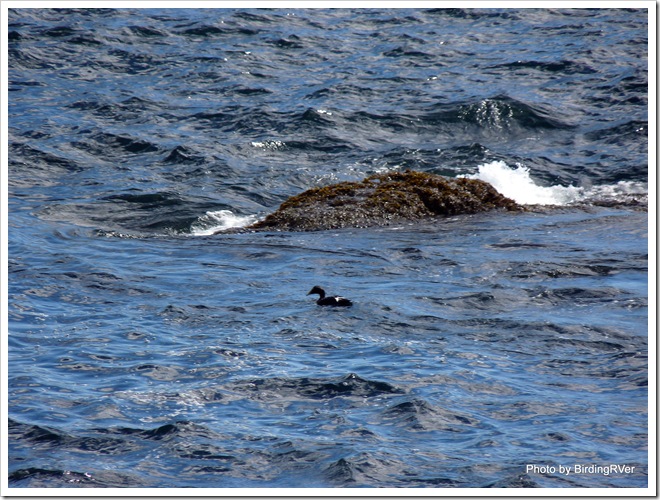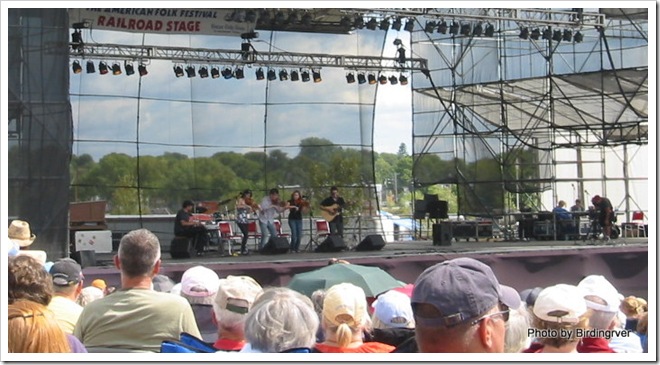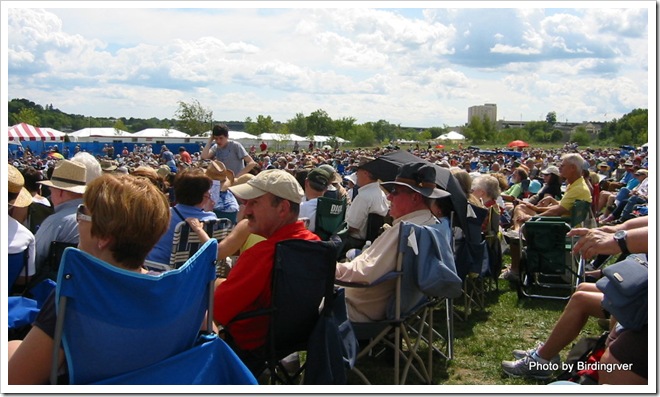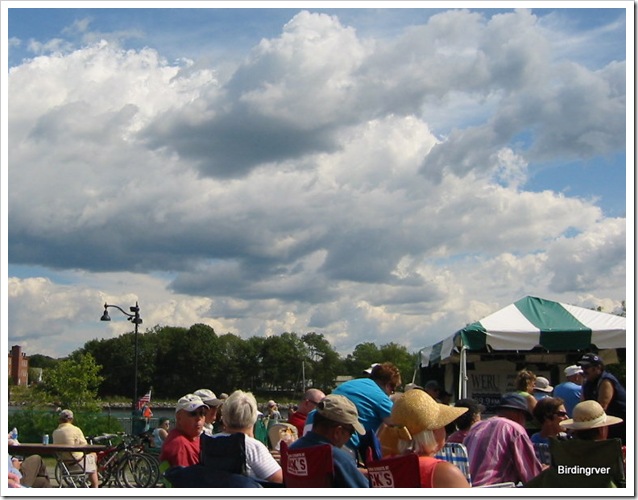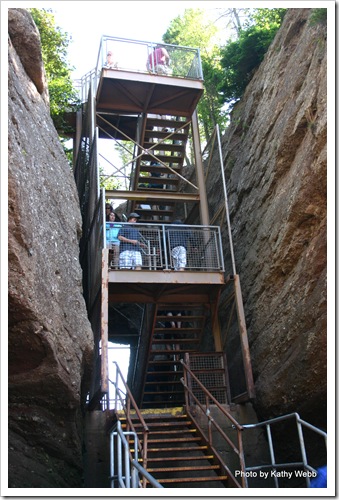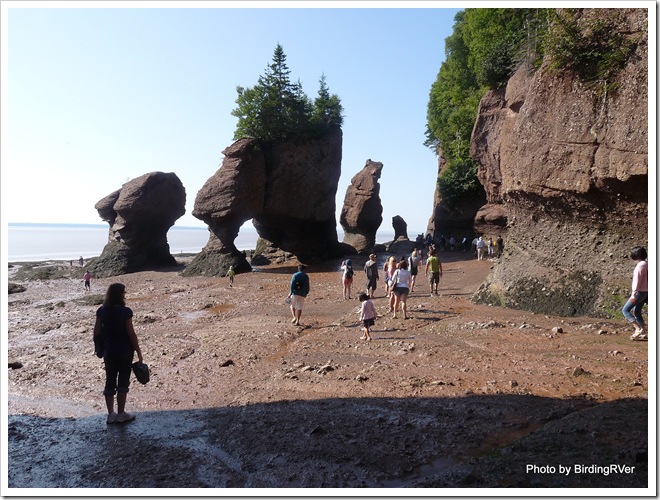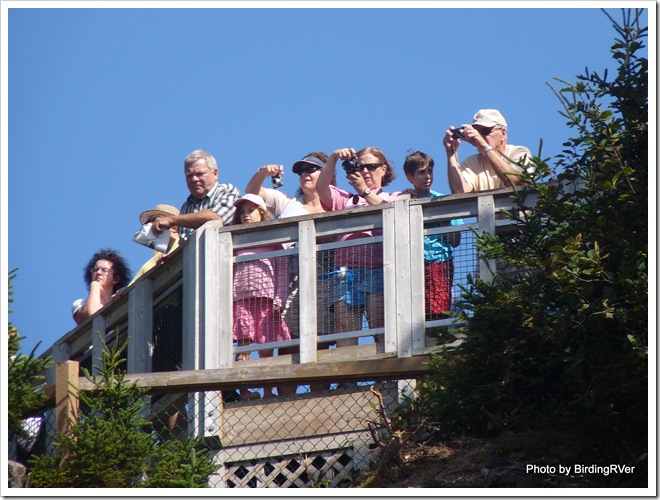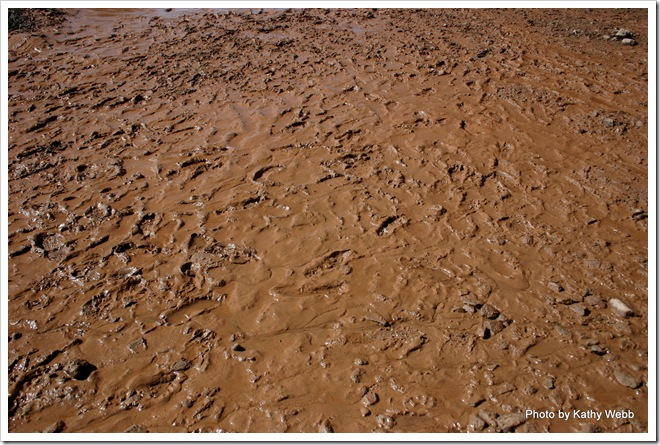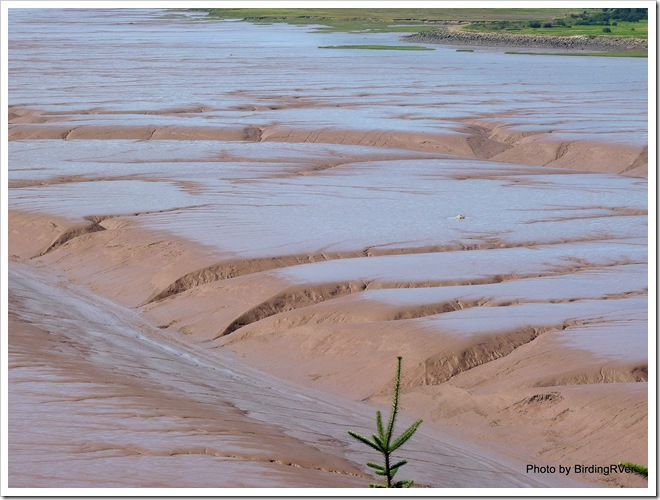The sign says it all: 231 MILES PER HOUR
As we well know non-retired RVers and campers really look forward to the three big three-day weekends of Memorial Day, 4th of July and Labor Day. As we used to do, many make their plans and reservations months in advance. These weekends are problematic for fulltime RVers, because we never know were we will be months in advance to make reservations. That coupled with the increase in traffic and crowds; most fulltime RV we know are just happy to find a place to sit out the holiday weekend. We found an older, smaller campground with at least twice as many tent sites as RV sites. Near the small New Hampshire town of Gorham in the White Mountains.
One of the many hiking trails at the campground.
This particular campground had miles of loop trails and roads for the three of us to hike on everyday and the tress were beginning to turn into there fall colors.
Sun beaming through colorful leaves
Probably the most famous spot in the White Mountains and perhaps all of New Hampshire is Mount Washington. To quote Wikipedia “Mount Washington is the highest peak in the Northeastern United States at 6,288 ft (1,917 m). It is famous for its dangerously erratic weather and long held the record for the highest wind gust directly measured at the Earth's surface, 231 mph, on the afternoon of April 12, 1934.” Mount Washington has a long history of tourist visitation since the Crawford Path, the oldest mountain hiking trail in the United States, was laid out in 1819 as a bridle path. Mount Washington was developed into one of the first tourist destinations in the nation, with construction of more bridle paths and two hotels in 1852 and 1853.”
Tip-Top House was built in 1853
In 1861 a coach road was added and in 1869 the Mount Washington Cog Railway added. Both of these are still in operation, but now the coach Road is known as the Mount Washington Auto Road. However, the Mount Washington Auto Road isn’t much wider than it was when first built and they have many restrictions on the size of vehicles on the Auto Road. Our truck is too long, too wide and too heavy to use the road. We took their Guided Van Tour and once we got on the mountain and saw how narrow the road was I was VERY GLAD we did!
That is the beginning of the barely 2 lane road up the mountain.
It was so clear we could see forever looking north.
Almost to the tippity top!
Looking down to the place we started at!
It was in the 70s when we left the valley at the start of the tour. When we arrived at the summit the was blowing at 37 mph, the temperature was 34 F and the Wind Chill was 16 F! Yet we saw a few people getting out of the vans and cars wearing flip flops and shorts!! What were they thinking!
Looking north with the railroad in the foreground
Looking west in the howling wind
Down the fall colored bracken mountain it goes
The original Stanley Steamer that F.O. Stanley and his Wife used to drive to the top on August 31, 1899
This photo on the wall of the museum shows why you probably don’t want to visit in the winter.
Mount Washington slideshow
